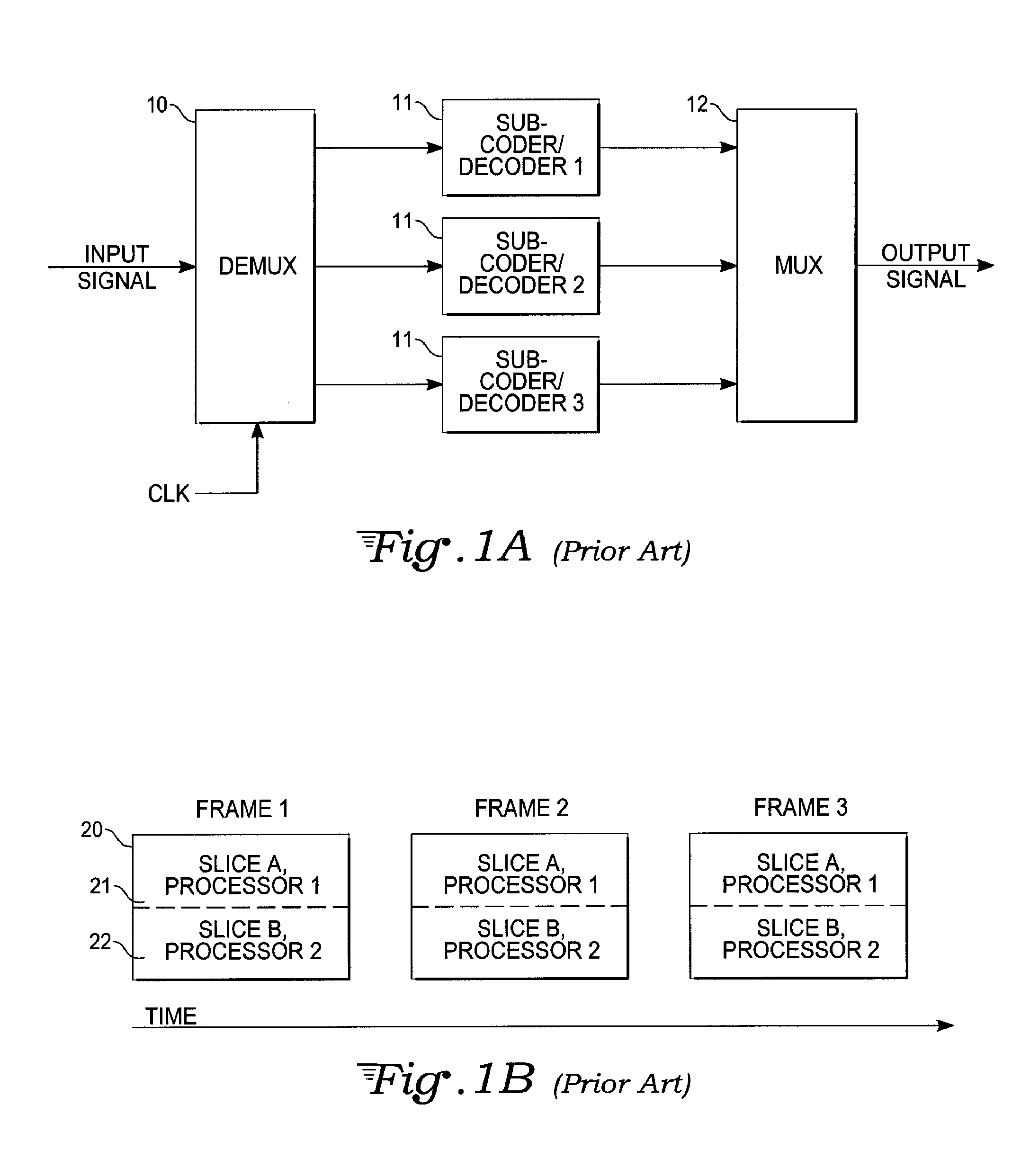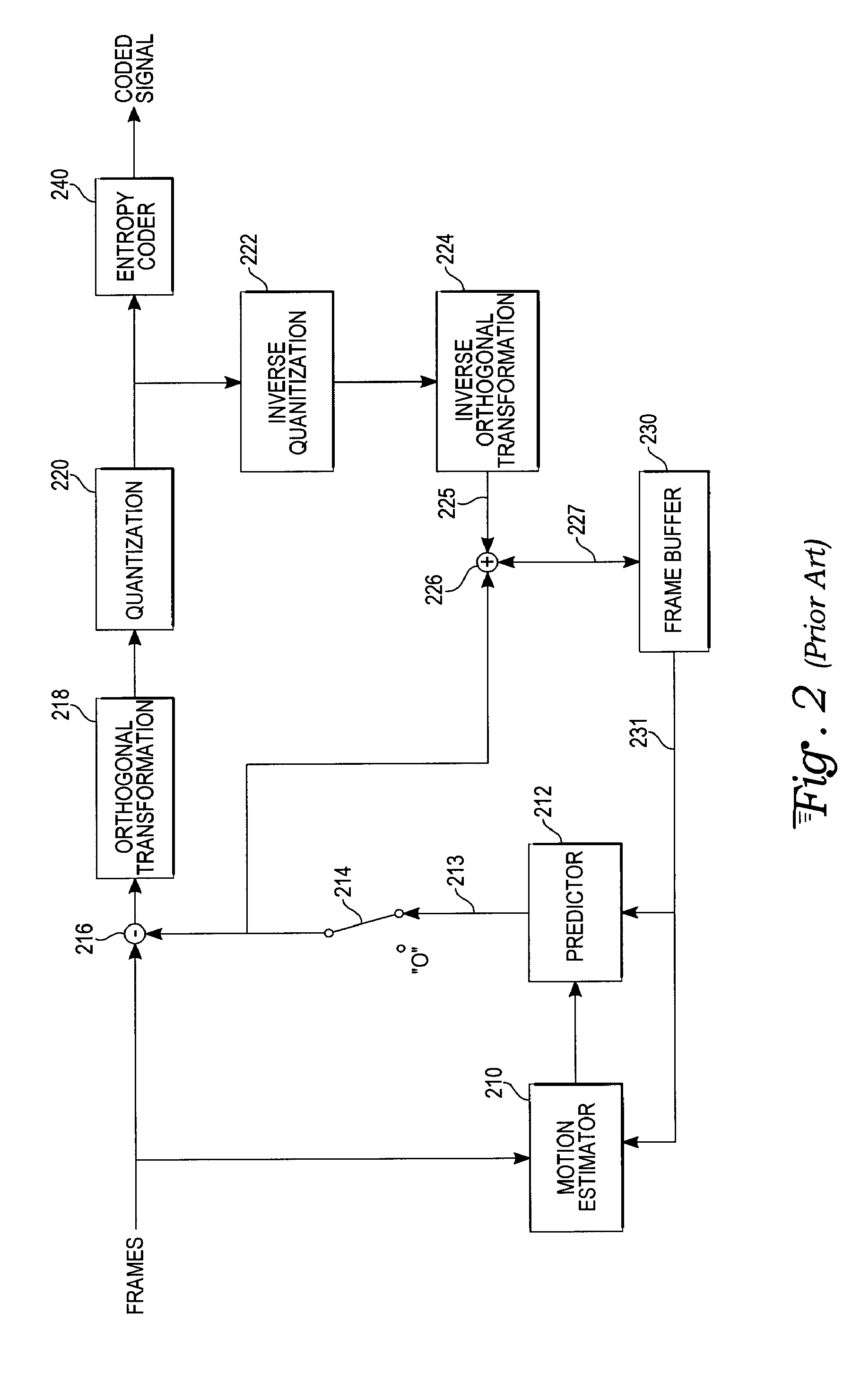Method and apparatus for encoding and decoding of video streams
- Summary
- Abstract
- Description
- Claims
- Application Information
AI Technical Summary
Benefits of technology
Problems solved by technology
Method used
Image
Examples
Embodiment Construction
[0056]In the following description, a new method and apparatus to encode and / or decode a video stream exploiting frame-level parallelism is disclosed. The frames of the video stream are encoded and / or decoded using M processing units where each processing unit processes one different frame at a time. Each processing unit can write a reconstructed frame to a frame buffer. A subsequent processing unit can use the reconstructed frame from that frame buffer as a reference frame. Hence, the processing units are connected via the frame buffers. The frame processing occurs time-displaced and can start when sufficient input data are available and, if necessary, if sufficient data of the reconstructed previous frame which was calculated in a previous stage are available.
[0057]As explained above with reference to FIG. 2, the frame buffer 230 in known architectures stores at least two frames: the reconstructed previous frame 231 and the reconstructed current frame 227. The method and apparatus...
PUM
 Login to View More
Login to View More Abstract
Description
Claims
Application Information
 Login to View More
Login to View More - R&D
- Intellectual Property
- Life Sciences
- Materials
- Tech Scout
- Unparalleled Data Quality
- Higher Quality Content
- 60% Fewer Hallucinations
Browse by: Latest US Patents, China's latest patents, Technical Efficacy Thesaurus, Application Domain, Technology Topic, Popular Technical Reports.
© 2025 PatSnap. All rights reserved.Legal|Privacy policy|Modern Slavery Act Transparency Statement|Sitemap|About US| Contact US: help@patsnap.com



